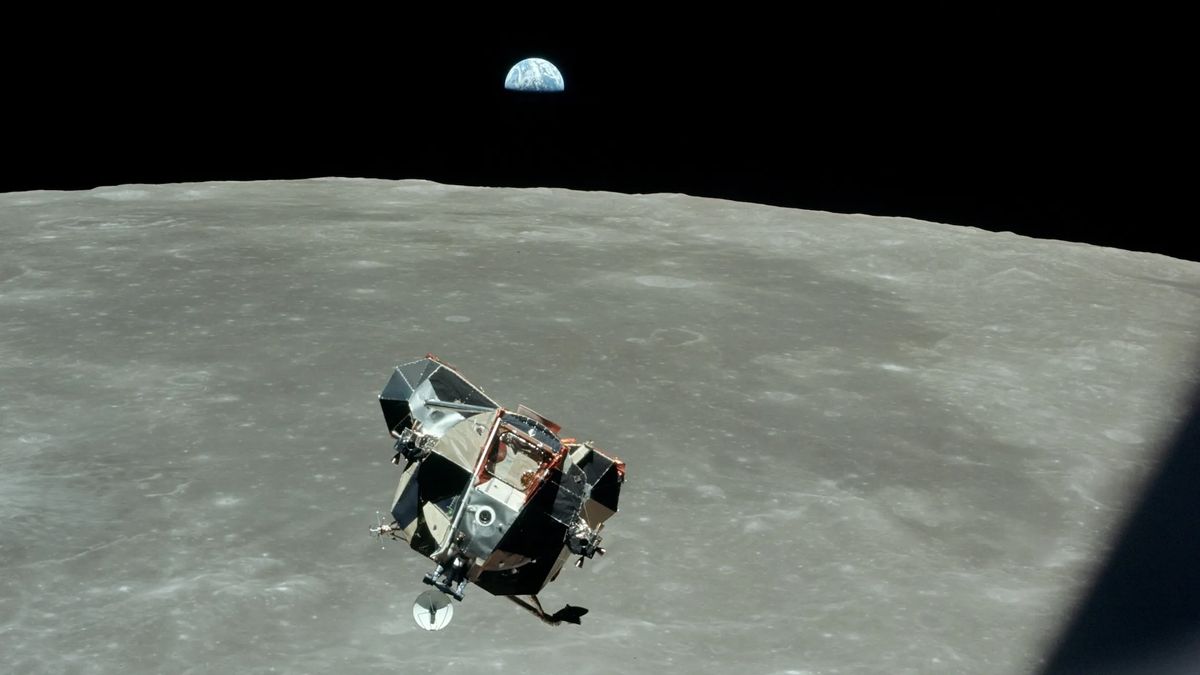What it is: NASA’s Apollo 11 Lunar Module
Where it is: 238,855 miles (384,400 kilometers) from Earth
When it was taken: July 21, 1969
Why it’s so special: Although they may not be visible here, all humans but one living on July 21, 1969, are in this image.
The day before this photo was taken, Apollo 11 Mission Commander Neil Armstrong and Lunar Module Pilot Buzz Aldrin had landed Eagle, the lunar lander, on the moon and then walked upon it, becoming the first humans ever to do so. As they did, the historic mission’s third crewmember — Command Module Pilot Michael Collins — waited for his crewmates about 60 miles (97 km) above in Columbia, the command module, orbiting the moon alone for 22 hours.
After their moonwalk was over, Armstrong and Aldrin blasted off in the ascent stage of Eagle to rendezvous with Columbia in orbit and begin their journey home. As Eagle approached Columbia, Collins took this photo.
It’s become an iconic image for two reasons. With Earth above the moon’s horizon in the background, it references the famous “Earthrise”‘ image taken the previous Christmas Eve by Apollo 8’s lunar module pilot, Bill Anders, who died in June at age 90. Apollo 8, the first time humans had traveled beyond low Earth orbit, circled the moon 10 times and was essential to the success of Apollo 11. “Earthrise” is perhaps the most iconic image of our planet ever taken.
Related: Space photo of the week: Bruce McCandless II floats untethered as the 1st ‘human satellite’ in history
Collins’ photo is special for another reason: It includes every living being but Collins, who is behind the camera, leading him to be dubbed “the world’s loneliest man.” Armstrong and Aldrin are in Eagle, and behind them, is Earth, where every human and animal resides. (Although technically, only about a quarter of Earth’s surface is visible here.)
Collins described the utter solitude of his solo trip around the far side of the moon in his book “Carrying the Fire” (Cooper Square Press, 1974) like this:
“I am alone now, truly alone, and absolutely isolated from any known life. I am it,” Collins wrote. “If a count were taken, the score would be three billion plus two over on the other side of the moon, and one plus God knows what on this side.”
This week marks the 55th anniversary of the Apollo 11 moon landing. NASA cataloged the image as AS11-44-6642HR in its Apollo 11 archive. It was shot using a Hasselblad camera.





















Discussion about this post